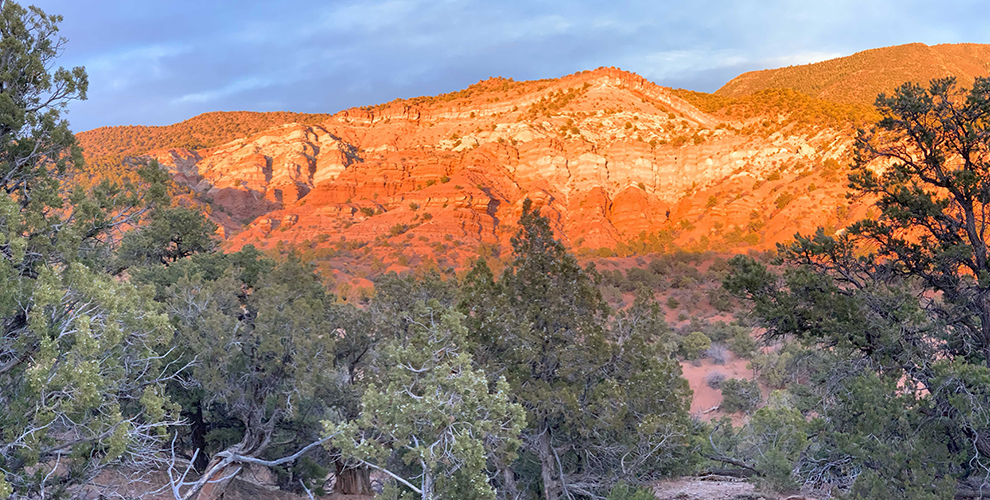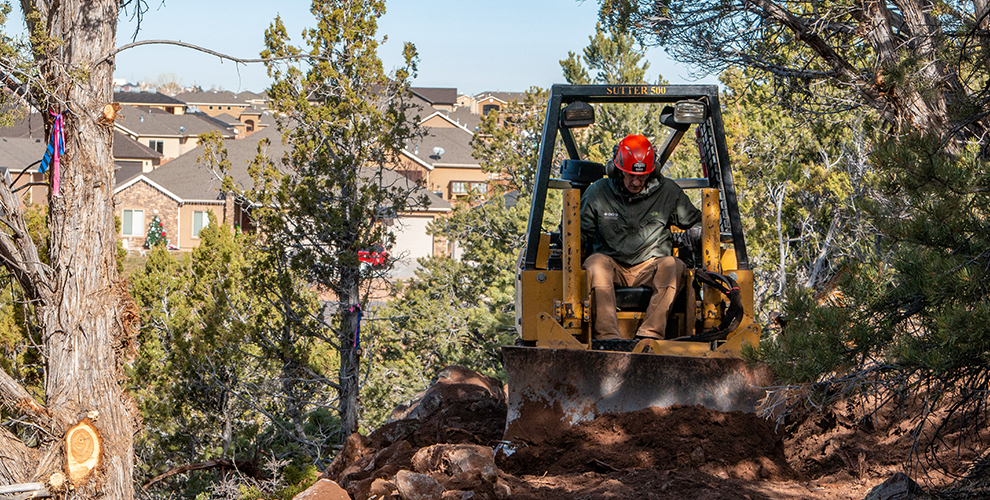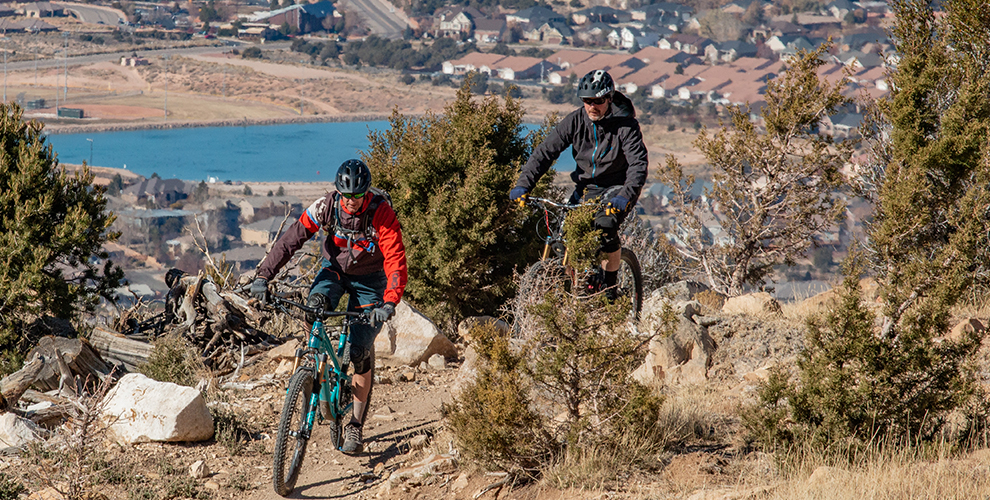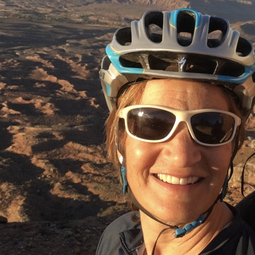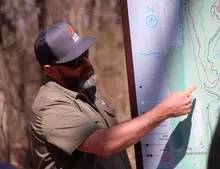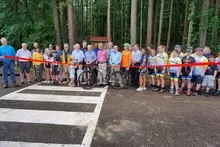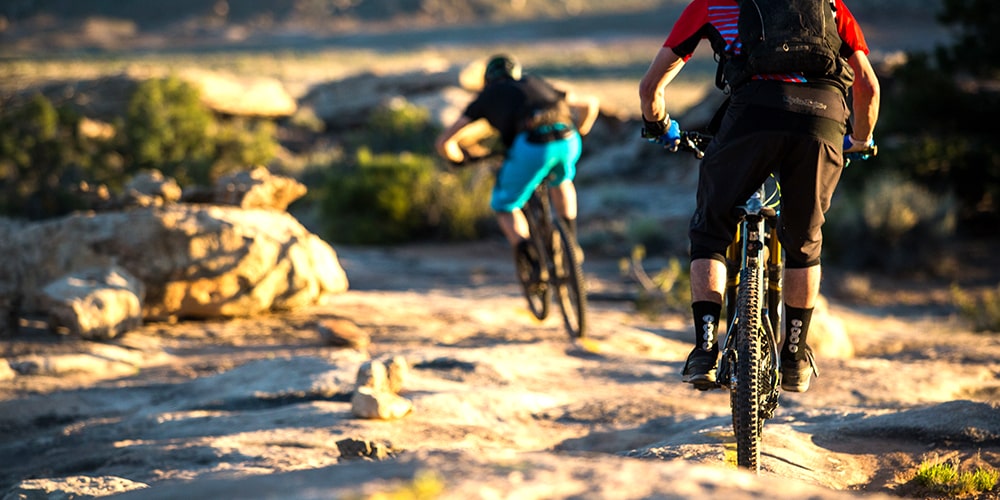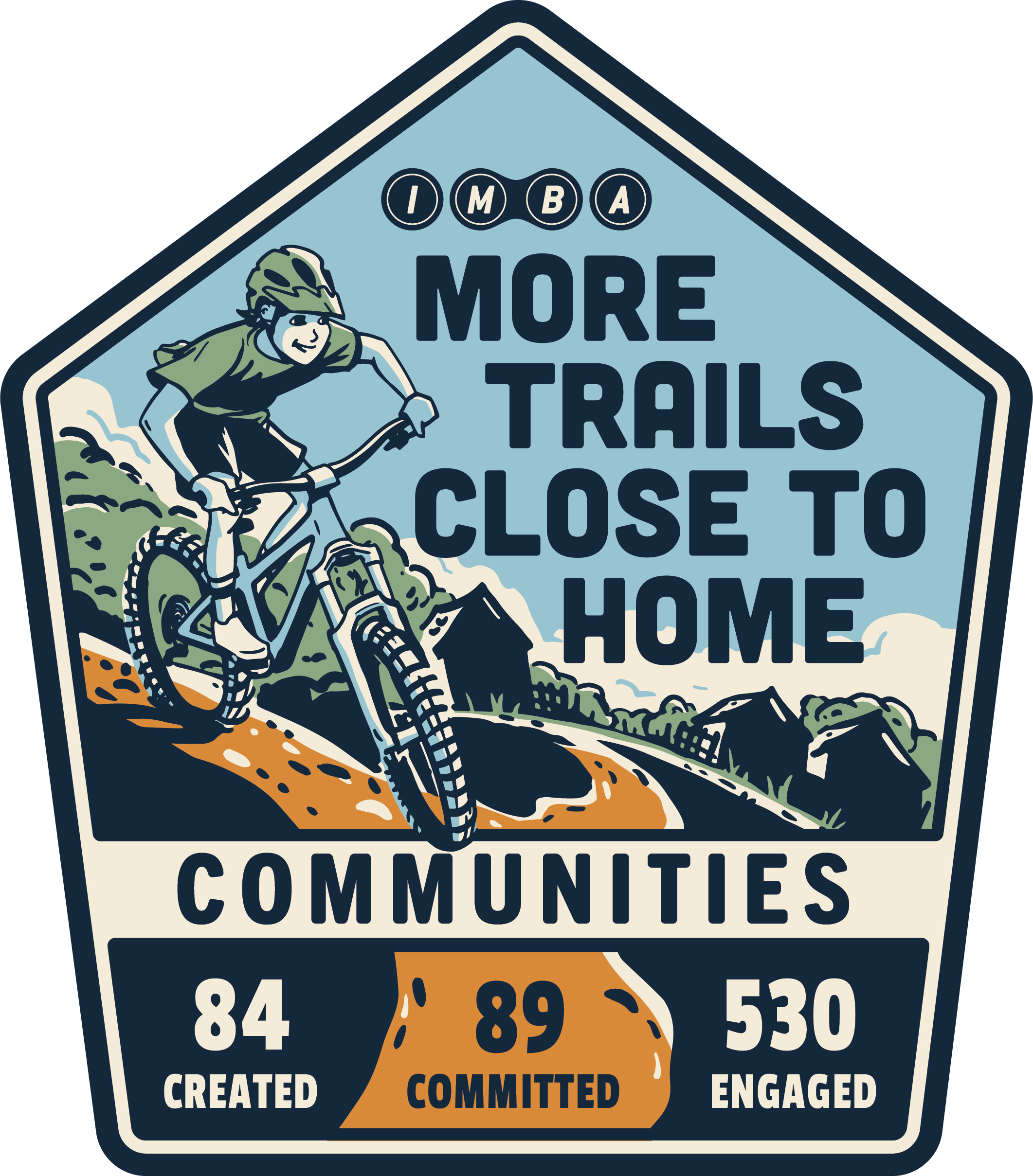Trail Accelerator Grant Kicks into Gear
Unless you live in Moab, Squamish, or Finale Ligure, you likely take a little or a long drive to reach your favorite mountain bike trails, and on the way home, say to yourself, “How can I get some trails like that close by?”
Mac Urie asked himself the same thing. He lives close to some world-class mountain biking in Southern Utah--Gooseberry Mesa; Guacamole Mesa; Hurricane Rim; St. George; Virgin, where the Red Bull Rampage takes place--but all those trails are at least 20 minutes away from his home in Cedar City. Mac, his friends, and his family wanted more trails close to home, and today, they have them. About 25 miles of new singletrack trail have been built since 2015, with a total goal for at least 100 new miles. “One of the most exciting things about Cedar City and the trails that are being implemented currently, is how close they are in proximity to the city limits,” says Urie. “When we have the whole system integrated, there will be five or six trailheads integrated with the city’s paved trail system that will link everything up.”
Well, how did they get here? Let’s rewind a few years. Mountain biking got started in Cedar City the way it does in many areas: enthusiasts like Mac took to the trails alongside hikers, horses, and even motorized vehicles. Before long, riders wanted more trails, especially trails that provided fun, flow, and technical challenge for bikes.
“We didn’t really have anything close to town, but there were a few pirated trails in areas east of town, so we figured there was a need,” says Dave Jacobson, Outdoor Recreation Planner for the Bureau of Land Management (BLM) Cedar City office. Having little experience with mountain bike trails, Jacobson got in touch with IMBA Trail Solutions. Around the same time, mountain bikers from Cedar City were joining forces with the Dixie Mountain Bike Trails Association (DMBTA), the IMBA Local chapter from nearby St. George. (The Dixie Mountain Bike Trails Association has now changed its name to the Trail Alliance of Southern Utah, or TASU.) These groups began to work together on mountain bike trail projects such as the Three Peaks Recreation Area about 12 miles west of Cedar City.
Meet #TrailChampion Dave Jacobson
Access
Shane Wilson, project manager for IMBA Trail Solutions, headed to Cedar City to find opportunities to expand upon the small network of existing trails around town. Wilson has worked with IMBA Trail Solutions planning, designing and building trails all over the world, including Switzerland, Norway, and Mexico. He’s no stranger to the challenges that can stymie a trail venture or the enormous task of coordinating an array of moving parts to keep a project rolling.
“IMBA helps build partnerships between all the different parties invested in developing trails to support them in meeting their goals and creating strong funding streams,” explains Wilson. “In Cedar City, we helped the city, the BLM, and the mountain bikers create a vision of the kind of trail system they wanted and how to make it happen.”
IMBA designed a concept trail plan, which acts as a blueprint, informing each step of development from assessing resource impact to integrating trails with urban pathways and parks.
Much of the public land adjacent to Cedar City is managed by the BLM, making it ideal for trails. A crucial role for the BLM is to provide recreational opportunities for the general public, and the agency has a long history of support for mountain biking and IMBA’s work. Wilson recommended several areas for trail building on BLM land that hadn’t been considered previously. “I was not a mountain biker before, and I didn’t even understand where we could put trails, for instance on steep hills like in the Southview area,” explains Jacobson. “IMBA came in and determined which areas would work best for trails.”
(Handy tip: The first step in getting access to land is getting permission from the legal owner to use the land. You can see who owns the land where trails exist or where you want to build them with the Land Owner Overlay view on Trailforks.com.)
Some of the trailheads on existing and planned trails came into city boundaries, which meant the city was also involved with the trail project. Access to municipal areas required permission from the city. “Some of the city council members needed convincing about building the trails,” says Maria Twitchell, Director of Visit Cedar City and Outdoor Recreation Director for Iron County, “but the city events coordinator, the county natural resources director, and most people were excited about trail development. It helped to have city leaders well educated early in the process. Dave attended a lot of city council meetings and talked about the economic impact of trails.”
Cedar City also has its own trails committee that had begun to implement a plan for pathways and bike lanes throughout town. Wilson took advantage of the existing and planned path infrastructure, integrating it into the singletrack trail system and creating urban connectivity. Connecting city paths to natural surface trails increases access to the outdoors and outdoor activities, and allows users to walk or bike rather than drive to the trails. The trails committee was enthusiastic about the trail connections. They hope to eventually connect Southern Utah University and the entire city with the trail system.
Funding
The financing for Cedar City trails comes from what Jacobson describes as a “huge mix” of funders. A majority of the funds have come from BLM grants that IMBA applied for and received. Some funds have come from county and state grants, and some from Trail Alliance of Southern Utah’s fundraising, for starters. 
Jeff Jacombe joined the Cedar City chapter of Trail Alliance of Southern Utah when a fellow biker chatted with him on the trail and convinced him to check it out. Jacombe explains the creative avenues the local chapter has tapped for fundraising, “We have had grants from the Utah Office of Outdoor Recreation and the BLM. The state grant required a match, and the BLM money was a match for the state money. The club also raises money through donations and fundraisers. We have some corporate donors. We do the bike valet at the Red Bull Rampage, and that brings in a lot. Individual donations is probably our second highest donation source. And we also provide thousands of dollars in volunteer hours. If grant funds come in, we may get our funds reimbursed up to 75%, and then we reinvest that in the next project.” The Trail Alliance of Southern Utah now has a member of the forest service on the board who is helping the club understand US Forest Service grants.
Twitchell administers county funds that have helped finance the trails for four out of the last five years. “We’ve provided funds from the Iron County TRCC, which is a 1% restaurant tax on prepared food. In some cases, the BLM applies for the restaurant tax funds and sometimes the restaurant tax has also been used to match state grants,” says Twitchell. “We support the trails because they provide easy access for people to enjoy outdoor recreation in the amazing land that surrounds us. We are building a mountain bike following, and the parking lots at the trailheads are full, often with cars from out of town, so we know the trails are becoming a destination.”
Funding also comes in the form of donated items such as tools and vehicles as well as volunteer hours. In some cases, grant funds with matching requirements can be matched, at least partially, with volunteer hours. Volunteers on the Cedar City project include Trail Alliance of Southern Utah members; other local mountain bikers, hikers, and members of the trails community; high-school athletes and adults involved in the National Interscholastic Cycling Association (NICA); Southern Utah University college students; American Conservation Experience (ACE) workers; and interns from the Intergovernmental Internship Cooperative (IIC), a partnership between Southern Utah University, various land management agencies, and Native American tribes of Southern Utah, Northern Arizona, and eastern Nevada.
Education
Before construction got started, IMBA Trail Solutions held a basic Trail Building School for volunteers who would be working on the trails. Since then, additional Trail Building Schools have been held as refreshers when crews return each year. The training focuses on principles of sustainable trail design, construction, and maintenance.
The Cedar City project is a hybrid build, meaning a collaboration between Trail Solutions professionals, BLM staff, and local volunteers. Volunteers work at every level, from marketing and administration to assisting with flagging new trail corridors and construction. Professionals from IMBA Trail Solutions work with the various groups to integrate them where their skills are needed most. Trail Solutions’ build teams focus on designing each new trail and using a mix of mechanized and hand build techniques to put the best trail possible on the ground.
AJ Sahagun is a former DMBTA board member who started the Cedar City chapter of DMBTA, (now Trail Alliance of Southern Utah). He jokingly describes himself as a stubborn donkey who changed some of his preconceived ideas about trails during training and volunteer work. “Skills from trail building training are key,” says Sahagun. “All along the way, we were getting informal education from everyone at IMBA, from the project manager and all the trail builders. We didn’t think we wanted a machine build because we didn’t want trails 6-feet wide, and we wanted the trails to go straight downhill. We learned that the machine-built tread would revegetate so that we would have a nice singletrack width. And Tyson (Swayze) and Joey (Klein) taught us that there’s more maintenance when you build fall-line trails because of erosion.”
The Trail Alliance of Southern Utah gives all volunteers the “Guidelines for a Quality Trail Experience” pamphlet, a collaboration between the BLM, IMBA, and other partners. If you would like to learn more about building high-quality trails, you can check out the publication here.
